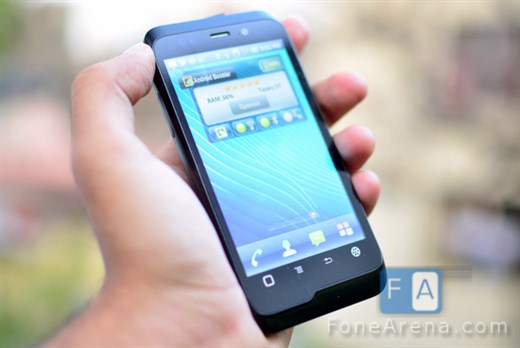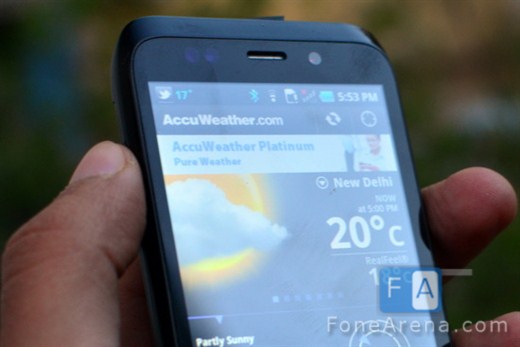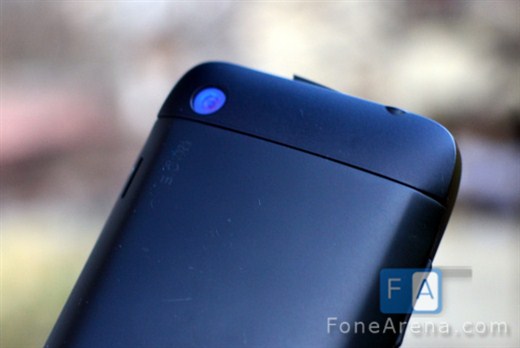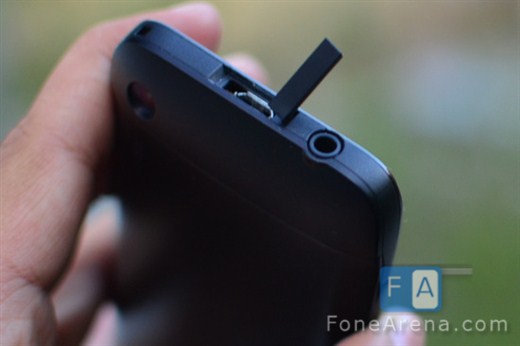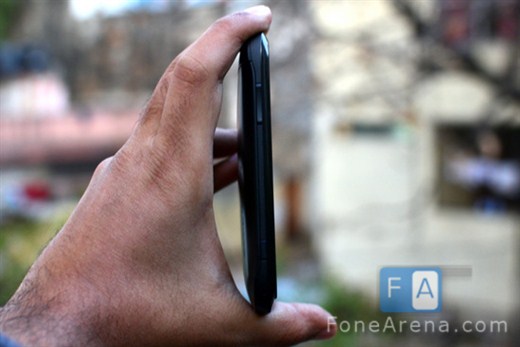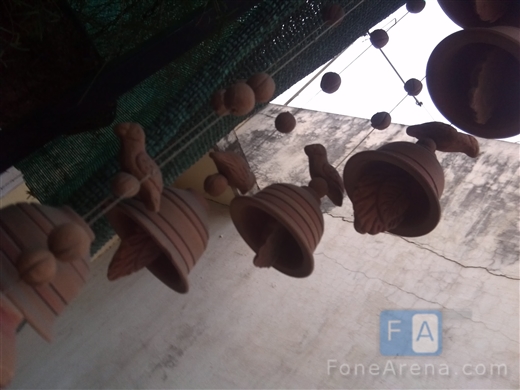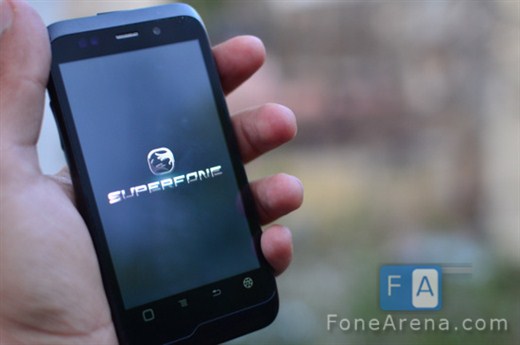Micromax as a brand is synonymous with low end , cheap phones which appeal to the masses. However the brand has been trying to break into the mid range segment with its line of Android phones packing higher end features at mass market prices.
The latest entrant is the A85 dubbed as the A85 Superfone. With higher end features like a Tegra 2 processor and large capacitive touch screen , the company is trying to gain a foothold in the upper range Android smartphone segment. Read on to find out if the phone is worthy of the title !
Unboxing
httpv://www.youtube.com/watch?v=NbzP7DONBGw
Specifications of the Micromax A85 Superfone
- 3.8″ WVGA (800×480) resolution screen
- 1Ghz Dual Core Tegra 2 processor
- Dimensions – 118.7 x 60.1 x 13.8 mm
- Android 2.2 (Froyo)
- 5 MP camera with 720p HD video recording, VGA secondary camera
- 3.5 mm audio jack
- 3G HSDPA , HSUPA , Bluetooth v2.0, Wi-Fi 802.11 b,g, n (2.4GHz and 5.0GHz), aGPS (assisted)
- 8 GB internal internal memory with expandable memory up to 32GB
- 1500 mAh Li Ion battery
Hardware
The first time you glance at the Micromax A85 you might be pleasantly surprised to see a device which looks fairly upmarket. Gone are the cheap plastics which were associated with the brand. Make no mistake , this is still not in the same league as devices from Nokia and HTC but it is nice to see a solid aluminum back and high quality plastics. Micromax has made a conscious effort to keep the branding at a minimum and left it only to a small mention on the backpanel.
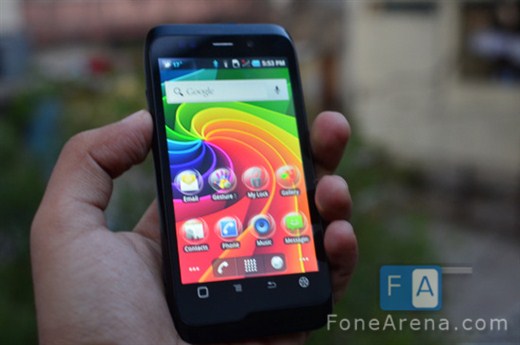
The front is dominated by a fairly bright WVGA resolution 3.8″ screen. A front facing camera , ambient light sensor and proximity sensor are located above the screen.
The screen itself is fairly bright and has decent sunlight visibility. It is easy to see that Micromax shaved off costs here by using a lower quality panel. Color rendition was definitely off and viewing angles were abysmal.
Four capacitive buttons at the bottom of the screen round off the front of the device. The buttons are not backlit and sensitivity levels are quite low. We found ourselves jabbing the buttons to make them respond far too often.
The back of the phone is made of an aluminum panel. Very strong and does not flex under pressure , definite plus point to Micromax for this. The rear cover can be easily lifted by pressing two buttons located on the side which ensure that it does not accidentally slide off.
The 5MP camera can be seen towards the top of the phone and it unfortunately does not come with a flash. This makes night time photographs a definite no-go. More on the camera below.
The micro SD card can be hot swapped while the SIM card cannot. The USB slot is present at the top of the phone hidden under a slot flanked by a 3.5mm jack on the left , strap eyelet on the right.
The phone is quite heavy and is not particularly thin either. Those seeking the thinnest or lightest phone possible should steer clear as this chubby phone is better suited for male hands than for someone from the fairer sex.
Software
Straight out of the box you are met with disappointed at the fact that the phone runs Froyo. Yep , thats right. Android 2.2 with not much hope for a Gingerbread update let alone Android 4.0 Ice Cream Sandwich. The phone comes with two launchers onboard which lets you decide the kind of experience you want. Both the launchers work as expected and were very smooth. In fact it is worth noting that the phone hardly ever slowed down. Kudos to Micromax for providing a very optimized and smooth experience though we do wish this was on Gingerbread instead.
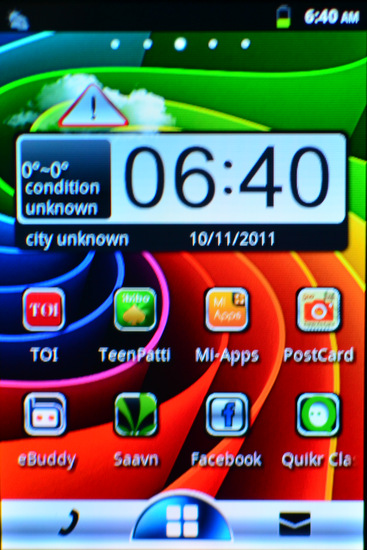 One of the several launchers bundled with the phone
One of the several launchers bundled with the phone
Micromax has definitely taken cues from other manufacturers while developing its ROM. The drop down notification shade includes toggles for bluetooth , wifi , data and other often used settings similar to what Samsung does. The lock screen takes cues from the latest version of HTC Sense by letting users jump directly into an application from the lockscreen. The operation works as expected through out the testing period.
Micromax has been touting gesture control as a differentiating feature of the A85. In our testing we really couldn’t get it to work. While theoretically it is possible to enable it for calls , e-mail, gallery, music and the phone , it never worked for us. According to Micromax it should be possible to browse through your albums or photos by swiping your hand to your left or right. If gesture control is one of your main reasons for buying this phone , you might want to rethink. The phone is compatible with Tegra Zone and comes with Riptide GT installed on the phone.
Camera
The Micromax A85 comes equipped with a 5MP camera capable of capturing 720p video. There were severe white balance issues with the camera. 720p video is captured in the 3GP format resulting in extremely high compression. White balance was off again and frames were skipped while turning the camera around which resulted in very choppy video. Suffice it to say that you might as well not use the video camera. Click bellow to check out the photo samples.
Battery Life
Calling the battery life on the Micromax A85 poor would be an understatement. A fully charged battery dies in half a day with hardly any usage. Not good at all. The battery is a 1500 mAh unit so we think it might be a software issue with battery management.
Conclusion
We wanted to like the Micromax A85 , we really did but there are some glaring shortcomings here which prevent us from giving this a recommendation. It is tempting to see a device with a Tegra 2 processor , large screen and most of the bells and whistles of higher end phones at an irresistible price point of about Rs. 15,000 but the quality of components here leaves a lot to be desired. A borderline unusable camera , ancient software build and above all woeful battery life makes this hard to sell.
Rating : 6/10
Pros
- Tegra 2 processor
- Smooth performance
- Price point
Cons
- Short battery life
- Poor camera
- Gesture control is gimmicky at best


